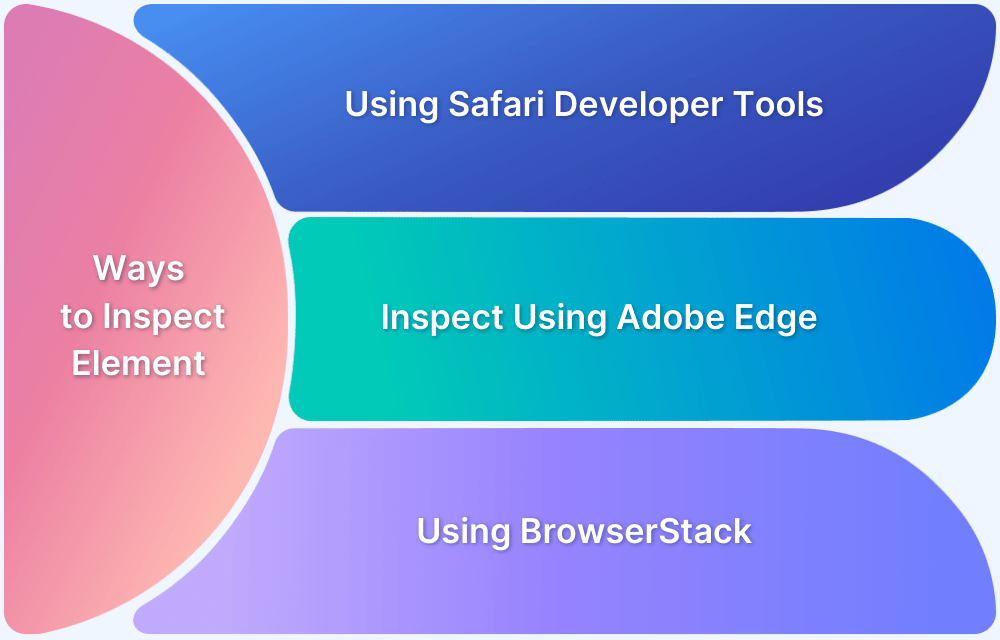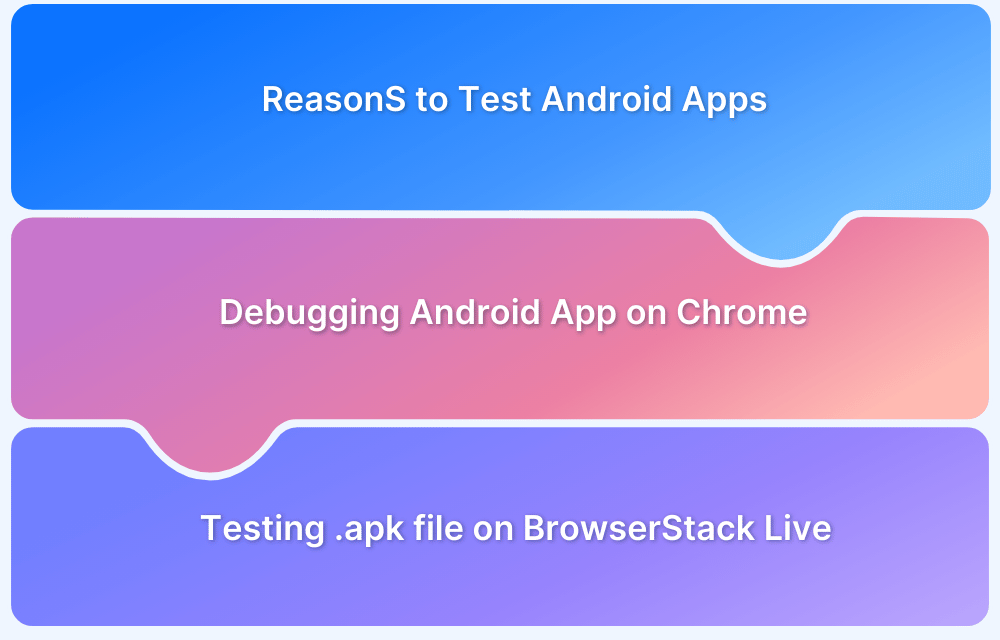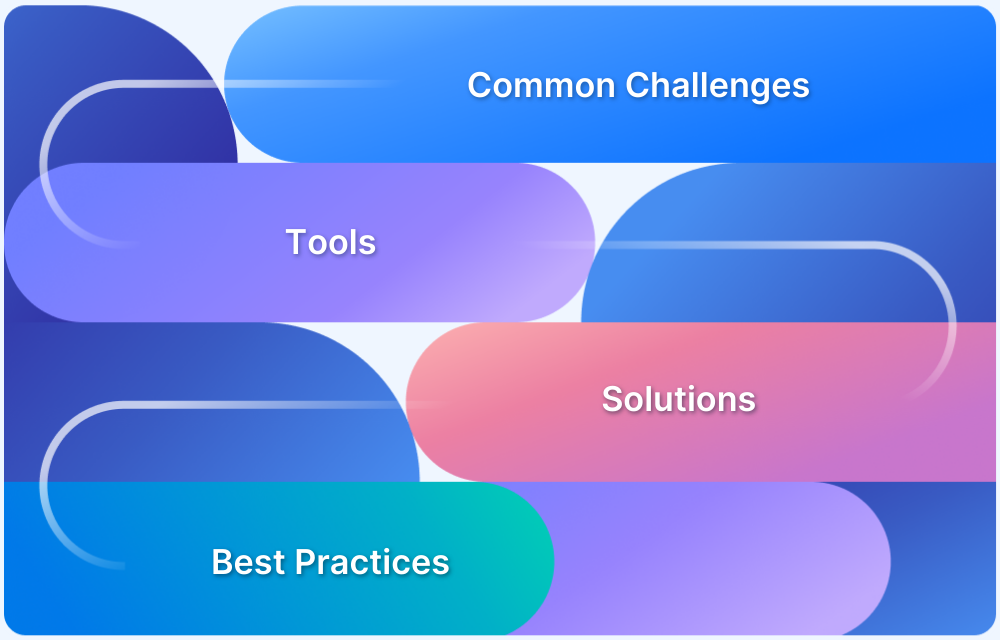Most people view the mobile version of a website in Chrome by opening DevTools and switching to a mobile device preset. The screen shrinks, the layout adjusts, and it feels like the mobile site is being reviewed.
What is less obvious is that Chrome supports two different mobile views. One is a simulated layout preview inside the desktop browser. The other is a real mobile Chrome session running on an actual device. Both are accessible through Chrome-based workflows, and both look similar at first glance.
However, Chrome DevTools shows how a layout responds to screen size. Real mobile Chrome shows how the browser behaves.
This guide explains how to view the mobile version of a website on Chrome using each approach, and when each one applies.
Why Test Mobile Version of a Website on Real Chrome Browsers in 2026?
As of November 2025, Chrome accounts for 68.17% of the global mobile browser market, making it the primary way users access websites on mobile. For most teams, mobile validation still begins with Chrome DevTools or local machine previews, which are useful for quick checks but come with clear limitations.
Simulated mobile views resize the desktop browser and approximate screen dimensions. They help verify responsive layouts and breakpoint behavior, but they do not replicate how mobile Chrome renders content, handles touch input, or responds to device constraints.
However, when you test on real devices, you can check how the site actually renders on Android devices, how touch interactions behave, and how layouts respond to real-world conditions.
Here are more reasons to test mobile version of a website on real chrome browsers:
- Mobile Chrome behaves differently from desktop Chrome: It runs on Android and interacts closely with the operating system. Rendering, font handling, and viewport calculations differ even when screen sizes appear similar.
Read More: How to view desktop sites on Android
- Touch-first interactions change usability: Elements that look usable with a mouse can feel cramped or unresponsive on touch screens. Tap target sizing, gesture handling, and scroll behavior can only be judged accurately on real devices.
- Virtual keyboards affect layout: Input fields, fixed headers, and bottom-aligned components often break or overlap when the keyboard opens. These issues do not surface in desktop simulations.
- Device performance influences visual stability: Mobile CPUs, memory limits, and GPUs affect how pages render and update. Layout shifts, delayed image loading, and visual jank may appear only on real devices.
- Chrome versions vary across devices: Users run different mobile Chrome and WebView versions. Bugs tied to specific versions or recent updates cannot be validated reliably through simulation alone.
Different Ways to View Mobile Version of Website on Chrome
Testing your website for responsiveness requires access to multiple devices. You can get access to these devices and test your website for how it performs on the Chrome browser in different devices using either of the following ways:
- Using Chrome DevTools: This method uses the inbuilt limited set of devices that are available through simulations within the Chrome browser through Chrome DevTools. It gives a mobile view of your website on the desktop browser.
- Using a Real Device Cloud: This method gives access to a large library of devices with the Chrome browser preinstalled where you can test your website.
Method 1: Using Device Simulation in Chrome DevTools for Mobile View
Users can view the mobile version of a website by using Chrome Devtools.
Note that this method is not entirely reliable as it uses a simulator rather than a real device and browsers to get the job done. Therefore, it cannot replicate all real user conditions, which means that any tests executed by this method will be inconclusive. For 100% accurate results, use the second method – using real browsers.
Listed below are the steps to view the mobile version of a website on Chrome:
Step 1. Open DevTools by pressing F12.
Step 2. Click on the “Device Toggle Toolbar” available. (Icon turns blue when the device mode is turned on)
Step 3. Choose a device you want to simulate from the iOS and Android devices list.
Step 4. Once the desired device is chosen, it displays the mobile view of the website.
For web developers to gain accurate test insights, extensive testing on real devices is non-negotiable. It enables them to verify websites in real user conditions.
Read More: 10 must-have Chrome Extensions for testers
Method 2: View Mobile Version Using BrowserStack Live
Using BrowserStack Live comes across as the most efficient solution since it gives access to the large infrastructure of cloud-based real devices. You can leverage these devices without the overhead of maintaining the devices for upgrades and other tasks.
Get started by following three simple steps listed below:
Step 1. Sign up on BrowserStack Live for a free trial or purchase a plan.
Step 2. Navigate to the Live Dashboard after successful sign-up.
Step 3. Select the desired OS (Android, iOS, Windows, etc) and the device-browser combination (For example Samsung S22 – Chrome) and get started with web testing on a real device.
The device starts booting:
Step 4. Open bstackdemo.com in the browser and observe how your website appears on a different screen size.
What Chrome DevTools Mobile View Shows and What It Misses
Chrome DevTools mobile view is a simulation that resizes the desktop browser and applies mobile screen dimensions. It is useful for checking how a page responds to smaller viewports, but it does not behave the same way as Chrome running on a real mobile device. The differences matter when you rely on this view to judge whether a page actually looks and feels correct on a phone.
What Chrome DevTools Mobile View Shows:
- Responsive layout and breakpoints: Media queries trigger correctly based on viewport width, allowing you to confirm whether layout rules, stacking order, and component visibility change as expected across screen sizes.
- CSS reflow and spacing behavior: Flexbox, grid, margins, and padding adjust accurately when the screen narrows, making it effective for spotting overflow, clipping, or broken alignment.
- Viewport scaling: You can verify viewport settings to ensure meta tag is configured correctly and whether content scales or zooms unexpectedly at common mobile widths.
- Basic visual structure: Page hierarchy, content order, and relative element sizing reflect how the design adapts when moving from desktop to mobile layouts.
What Chrome DevTools Mobile View Does Not Show:
- Real mobile Chrome rendering: Fonts, text spacing, and line breaks are rendered using desktop Chrome, which can hide truncation, wrapping, or readability issues that appear on actual mobile devices.
- Touch and input behavior: Tap targets, gesture handling, scroll physics, and touch responsiveness are not represented, even though they directly affect usability on mobile.
- Virtual keyboard impact: Layout shifts, hidden inputs, or fixed elements breaking when the keyboard opens cannot be validated in DevTools mobile view.
- Device performance constraints: CPU limits, memory pressure, and GPU rendering differences are not reflected, so visual instability or delayed rendering may go unnoticed.
- Chrome version differences: Behavior tied to specific mobile Chrome or Android WebView versions cannot be reproduced in the simulator.
Why view Mobile Versions of Websites in Chrome using Real Device Cloud?
Viewing mobile versions of websites on a real device cloud allows teams to access real mobile Chrome environments without maintaining physical devices. It removes the gaps caused by simulators and local machines while making it easier to validate layouts, interactions, and browser behavior across a wide range of devices and conditions from one place.
Platforms like BrowserStack offer on-demand access to real Android devices through the browser, letting teams open mobile Chrome instantly without setup. This makes it possible to check how a site behaves across different devices, Chrome versions, and environments from a single interface.
Here are the key features of BrowserStack:
- Real Device Cloud: Access to real Android devices running actual versions of mobile Chrome, not emulators or simulated browsers.
- Multi-Device Testing: Ability to switch between multiple devices, screen sizes, and Chrome versions to compare behavior quickly.
- Local Testing: Securely test websites hosted on localhost or staging environments on real mobile devices.
- DevTools: Inspect elements, view console logs, and debug layout issues using Chrome DevTools on real devices.
- Test Analytics: View test session history and insights to track completed tests, coverage, and frequency, and identify areas to improve testing efficiency.
Conclusion
Viewing the mobile version of a website in Chrome helps confirm how layouts respond to smaller screens. Chrome DevTools works well for quick previews during development, especially for checking breakpoints and responsive rules.
BrowserStack makes this practical by giving teams instant access to real Android devices running mobile Chrome through the browser. It removes the need to maintain physical devices while allowing teams to view, debug, and validate websites in real conditions.






